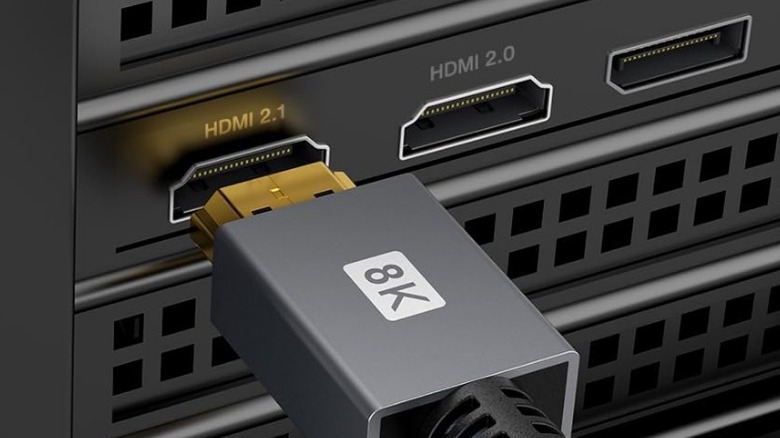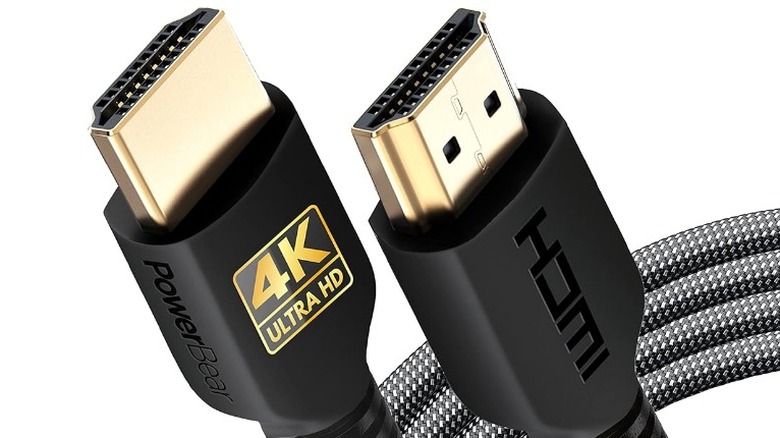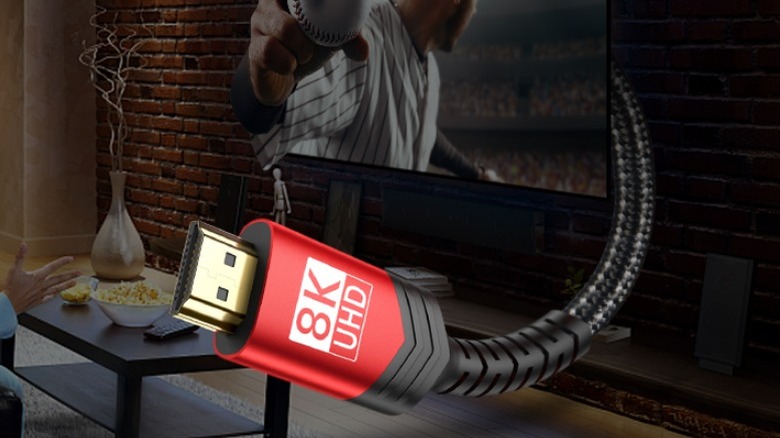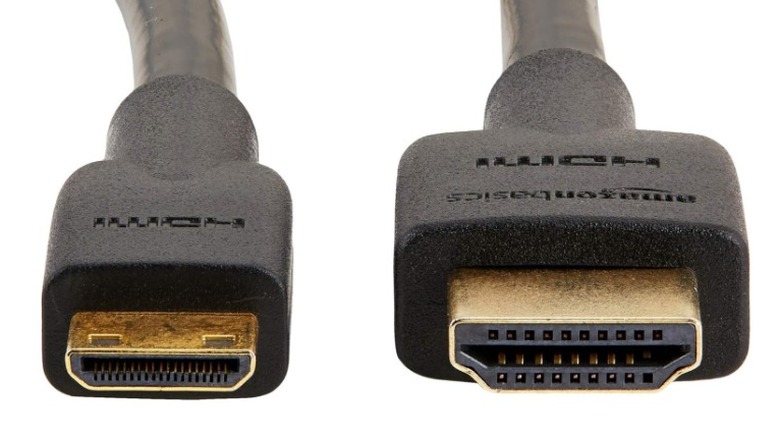We may receive a commission on purchases made from links.
HDMI, or High-Definition Multimedia Interface, has been the standard method of handling high-data audio and video connectivity for some time now. Sure, plenty of computers still offer DisplayPort connectivity (which tends to have a higher bandwidth), but HDMI is still the port that you’re most likely to find on just about any modern TV or monitor.
There is a common misconception that all HDMI cables and ports are the same, which is simply not true. HDMI was first introduced over two decades ago, and the technology has evolved significantly since then. Several iterations of the technology have been produced as the need for higher data flows has increased.
Most HDMI cables will technically work with just about any HDMI port, but an older cable may serve as a choke point that restricts the amount of data flowing to and from your devices to your displays and vice versa. This can result in lower-quality audio and video than your devices would be capable of producing if they had the correct cable. With that in mind, you might be interested in learning a bit more about the different kinds of HDMI cables that are out there and how to find the right one for your TV or computer monitor.
Get to know the different kinds of HDMI cables
There are currently 14 different kinds of standard HDMI cables out there: HDMI 1.0, 1.1, 1.2, 1.2a, 1.3, 1.3a, 1.4, 1.4a, 1.4b, 2.0, 2.0a, 2.0b, 2.1, and 2.1a, with HDMI 2.2 being recently revealed at CES 2025 and scheduled for release later in the year. That might seem a bit overwhelming, but it’s actually pretty simple. Most of the major changes in data capacity occur between the numbered generations. HDMI 1.0-1.3 all have a 4.95 Gb/s transmission rate, while 1.4 is 10.2 Gb/s, 2.0 is 18.0 Gb/s, and 2.1 is 48.0 Gb/s. In short, the higher the number, the faster the cable.
So why does speed matter? The differences in transmission speed are typically geared toward providing higher-resolution images at higher frame rates, as well as different kinds of audio connectivity. HDMI 1.0 can only transfer a maximum resolution of 1080p at a rate of 60Hz and supports eight audio channels. 1.1 and 1.2 can do 1440p, but only at 30Hz. These provide DVD-Audio and One-Bit Audio. 1.4 can do 4K at 30Hz with ARC, Dolby TrueHD, and DTS-HD audio, but the big jump is HDMI 2.0, which can do 4K at 60Hz, HE-AAC, DRA, and 32 audio channels and is the first generation to provide HDR. However, even the 2.0 is blown away by HDMI 2.1, currently the fastest available, providing up to 8K video at 60Hz with eARC audio.
What do the letters mean?
The letters that you might see after some of the numerical designations represent incremental updates to the specific generation of cable that were made after that version was first released in order to add extra compatibility and features. These don’t fundamentally change the cable capacity or the resolution and frame rate they can transfer. Still, they do offer new features that weren’t available on the original version and quality-of-life updates that can be useful if your display has the appropriate technology to take advantage of them. HDMI 2.1 and 2.1a, for instance, are different only in that 2.1a introduces source-based tone mapping, which increases the spectrum between dark and light colors in select uses of HDR.
You probably shouldn’t expect a dramatic difference in viewing quality if you already have the correct numbered generation of cable and you replace it with the most updated letter version. That said, it never hurts to get the most recent version when purchasing a new cable, as they tend to be similarly priced and are fully compatible with all of the same hardware.
The fastest cable is usually the best option for any TV or monitor
HDMI ports are generally designed to be backward compatible. This means that any newer and faster HDMI cable should work with just about any HDMI port you plug it into since the information bottleneck will come from the port, not the cable. What’s more, there usually isn’t a big difference in price between the various versions. Right now, you can get a 6ft. Amazon Basics HDMI 2.1 cable for just $8.59, which is actually less than the cost of an older Amazon Basics 6ft. HDMI 1.4 cable. With this in mind, there usually isn’t much of a reason to buy older cables. The newer, better ones are available at roughly the same price and are able to do all the same tasks and more. You probably won’t see better performance on an older TV, but it won’t be any worse, either. The cable itself will also be somewhat future-proofed if you need to use it for a more advanced device.
For example, an older 1080p60Hz TV receiving information from an HDMI 2.1 cable will still display images at 1080p60Hz, and a 4K60Hz TV will display 4K60Hz. The opposite is not true, however. A 4K60Hz TV receiving information from an HDMI 1.0 cable will still technically function, but it will only be able to display a 1080p60Hz Hz image.
Mini and micro HDMI
Most of what we’ve looked at so far has involved the standard HDMI format, which is most commonly used on TVs and computer monitors. However, that isn’t the only kind of HDMI cable out there. Mini HDMI (also called HDMI Type C) and micro HDMI (also called HDMI Type D) cables exist as well.
Due to its small footprint, Mini HDMI is most often used on devices without a lot of space for a bigger port, such as DSLR cameras and tablets. The even smaller micro HDMI is typically reserved for pocket-sized devices like smaller cameras and phones. That said, there are a few rare exceptions.
Certain portable displays and miniature LCD screens with slim profiles may be outfitted with Mini HDMI ports in order to fit their smaller frames. These cables are much more straightforward in their specifications and are fairly interchangeable so long as you have the correct fitting for the other end to match whatever device you’re connecting. Mini HDMI to standard HDMI cables are widely available. For example, the Highwings 4k60Hz cable is available for just $9.99.
Source: http://www.slashgear.com/1815249/how-to-choose-hdmi-cable-for-tv-monitor-display/
 tvbroadview.com
tvbroadview.com





